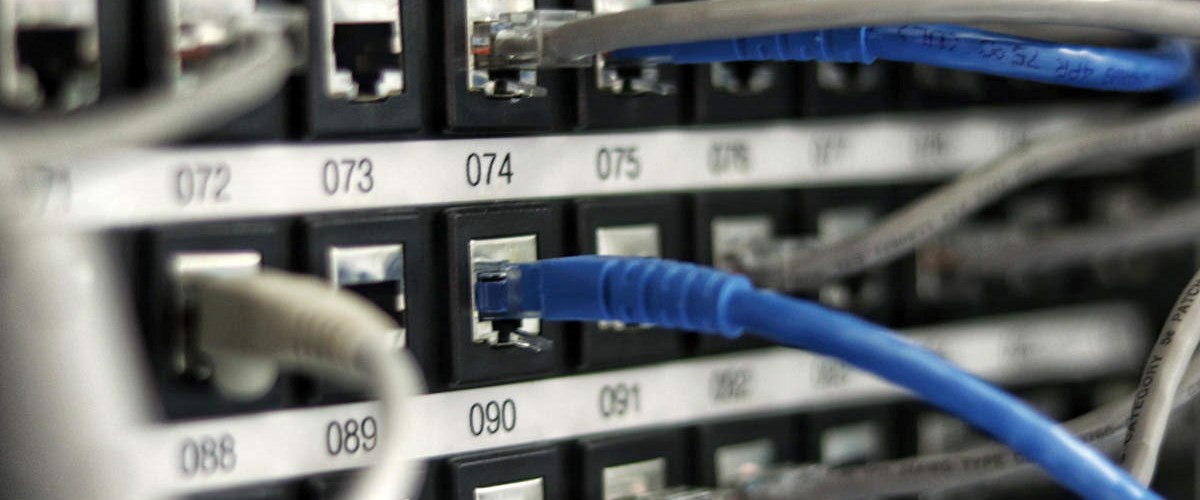
Creator: Jordan Harrison - License: CC BY-SA 4.0
One of the most important benefits of network pre-wiring and cabling is the potential to improve network speed and performance. By pre-wiring your network, you can avoid potential bottlenecks and ensure that your network runs smoothly and efficiently.
But what exactly is network pre-wiring, and how can it help improve your network speed and performance? In this article, we'll take a closer look at this topic, explore the benefits of pre-wiring and cabling, and provide some tips for how you can implement these solutions in your own network.
What is Network Pre-Wiring?
Network pre-wiring refers to the process of installing network cables before the walls and ceilings of a building are completed. This allows for the installation of network cables to be integrated into the structure of the building, rather than being added on as an afterthought. The goal of pre-wiring is to provide a clean and efficient network infrastructure that is hidden from view, while also improving network performance and reducing the risk of downtime.
The Benefits of Network Pre-Wiring and Cabling
There are many benefits to pre-wiring and cabling your network. Some of the key advantages include:
By pre-wiring your network, you can ensure that your network is optimized for speed and performance. This is because the network cables will be installed in the most efficient and effective manner possible, minimizing the risk of bottlenecks and other issues that can slow down your network.
When your network is pre-wired and properly cabled, there is a lower risk of downtime due to network issues. This is because the network cables are installed in a way that is designed to reduce the risk of damage or interference, ensuring that your network remains up and running at all times.
Pre-wiring and cabling also allows for a more efficient use of space within your building. By integrating network cables into the walls and ceilings, you can free up valuable floor space that would otherwise be taken up by bulky network equipment.
Finally, pre-wiring and cabling also provides increased flexibility and scalability for your network. By installing network cables during the construction phase, you can easily add new connections and devices as needed, without having to worry about the limitations of your existing network infrastructure.
Tips for Implementing Network Pre-Wiring and Cabling
If you're interested in pre-wiring and cabling your network, there are a few tips you should keep in mind:
The key to successful pre-wiring and cabling is to plan ahead. This means working closely with your contractor or builder to ensure that the network infrastructure is integrated into the building design from the start.
When pre-wiring your network, it's important to use high-quality cabling. This will ensure that your network is optimized for speed and performance, and that the cables will last for years to come.
As you plan your pre-wiring and cabling project, it's important to consider your future needs. This means thinking about how your network will evolve over time, and ensuring that your network infrastructure is designed to accommodate these changes.
Finally, it's important to work with experienced professionals who can help you design and implement your network pre-wiring and cabling project. This will ensure that your network is optimized for speed and performance, and that you get the most out of your investment.
Frequently Asked Questions (FAQs)
What is the difference between network pre-wiring and regular wiring? Network pre-wiring involves installing cabling and other networking equipment before the actual network devices are installed, whereas regular wiring is done after the devices are installed. Pre-wiring allows for better planning and more efficient installation of the network.
How does pre-wiring help improve network speed and performance? Pre-wiring allows for the installation of better quality cabling, which can transmit data at higher speeds with less interference. It also allows for more efficient placement of network devices, which can improve network performance and reduce latency.
What types of cables are used in network pre-wiring? The most commonly used cables in network pre-wiring are Cat5e, Cat6, and Cat6a cables. These cables are designed to transmit data at high speeds and are capable of handling large amounts of network traffic.
Is pre-wiring necessary for home networks? Pre-wiring is not always necessary for home networks, but it can help improve network performance and reduce the need for additional cabling and equipment in the future. It is recommended for larger homes or those with more complex network requirements.
Can pre-wiring be done in existing buildings? Pre-wiring can be done in existing buildings, but it may require additional planning and installation time. In some cases, it may be more cost-effective to use wireless networking technology or other networking solutions.
Conclusion
In conclusion, network pre-wiring and cabling can have a significant impact on network speed and performance. By installing high-quality cabling and networking equipment before the devices are installed, pre-wiring allows for more efficient placement of devices and better planning of the network. This can result in higher data transmission speeds, reduced network latency, and improved overall network performance. If you are planning to install a new network or upgrade an existing one, consider the benefits of network pre-wiring and cabling for improved network performance.